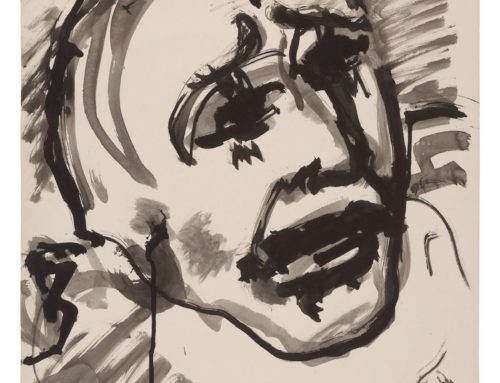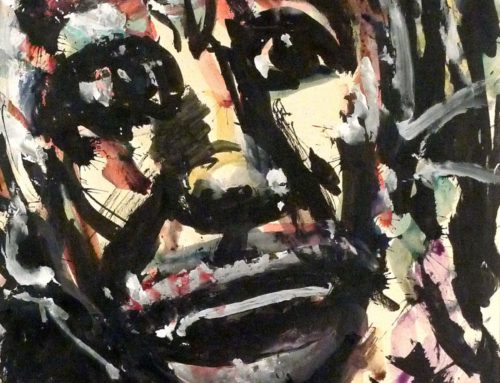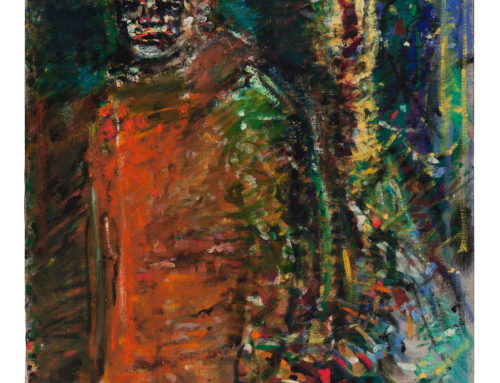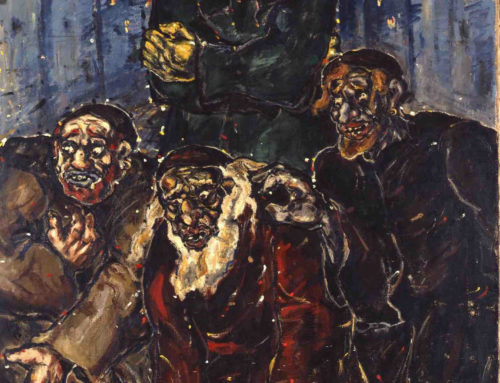Uncle Tom’s Cabin, c. 1958
(Street Named after Corner Pub, Berlin)
This is a relative rarity in the artist’s post-war oil-on-canvas imagery: human-contrived elements as a backdrop for natural elements. Describe the relationship between rectilinear and curvilinear elements in this image, of static lines and lines that seem to vibrate, of subtle color differences below and above, those contained by the trees and those contained by the buildings, as parts of a symbolic statement regarding human and divine presence and action in the world. How is that relevant to the artist’s particular biographical experience? These buildings were built in 1926-31. Research the Bauhaus as an architectural and industrial art movement in Germany: what was it all about? Where, specifically, and when did it flourish? What happened to it during the Nazi period and why? How and why might Ascher have been drawn to just these structures, artistically—rather than, say, any of the very different kinds of villas that abounded—in the Grunewald? The title of the gouache is based on a popular corner restaurant called “Uncle Tom’s Cabin.” For an American viewer, however, unaware of this, how does that title—to the extent that it can be connected to the American past and its history of prejudice, stereotype, marginalization, and persecution—offer further food for thought regarding not just the past, in the US or in Germany, but the present and the future, as well?










